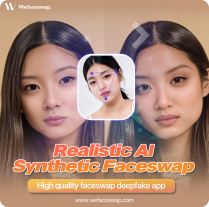AI Face Swap in Entertainment and Beyond
AI Face Swap in Entertainment and Beyond
Blog Article
Face Swap Fun: Creative Ways to Use Face Swapping Apps
The transformation of experience change engineering from a unique novelty to a mainstream development is nothing short of fascinating. Originating as a fun filter on early photograph programs, experience swaps have now become a built-in section of social networking content development and also professional industries. Having its rapid development and climbing recognition, deepfake (딥페이크) engineering has captivated thousands worldwide. Programs like Face Swap have played an important role in that phenomenon, providing sophisticated and innovative face sharing techniques which can be easy to use.

Deepswap is a cutting-edge serious understanding technology that allows for top quality experience trades with just a few clicks. It uses synthetic intelligence (AI) calculations to analyze facial features and effortlessly replace them with another person's. It's opened up an environment of innovative possibilities, letting consumers to generate jaw-dropping visible effects and special content. Let's explore a few of the exciting jobs you may make with Deepswap.
The Early Days of Face Trade
Face change technology first seemed in early 2010s with simple photo-editing apps. These early iterations were frequently clunky, making humorous but glitchy results that fueled its appeal just as entertainment. Consumers could swap people with friends, pets, or even a-listers, discussing these amusing images on social media platforms. While simple, this entry-level technology opened the entranceway for developers to examine their untapped potential further.
Development Forced by Cultural Media
Rapidly forward to the mid-2010s, and the increase of programs like Snapchat and Instagram catapulted experience swaps in to mainstream culture. The thing that was when restricted to fixed photographs was today being changed into real-time video filters. FaceSwap, Snapchat's famous lens, turned one of their most widely used features, interesting millions of customers daily. Studies suggest that by 2016, around 60% of Snapchat people had tried its experience trade feature at the least once.
Concurrently, social media influencers began adopting experience trades for material creation, heightening wedding through imagination and humor. This growing tendency more cemented the technology's presence in common culture, going beyond amusement and emerging as a powerful software for storytelling.
Advanced Engineering and Broader Programs
Today, improvements in artificial intelligence (AI) and device understanding have improved face trade tools, making them more precise and convincing than their predecessors. Deepfake engineering shows the cutting-edge region of experience trading, permitting hyper-realistic overlays of just one face onto another. Beyond entertainment, professional areas like filmmaking, marketing, and actually virtual knowledge have embraced these innovations.

For example, in 2021, reports indicated that almost 15% of digital marketers were trying out AI-driven movie personalization applying advanced experience swaps. This shift demonstrates how face exchange engineering is crossing in to realistic applications, encouraging their rising popularity.
A Trend on the Rise
What makes face trades evergreen is their convenience and adaptability. Thanks to mobile-friendly apps powered by AI, anyone can experiment with experience trades without complex expertise. Whether for lighthearted fun or professional use, the expansion with this engineering implies extended growth.
From their simple origins as a photo-editing novelty to their modern-day programs in AI and marketing, face trade engineering has changed remarkably. With further breakthroughs beingshown to people there, that development is placed to maintain its reputation for years to come.
Report this page